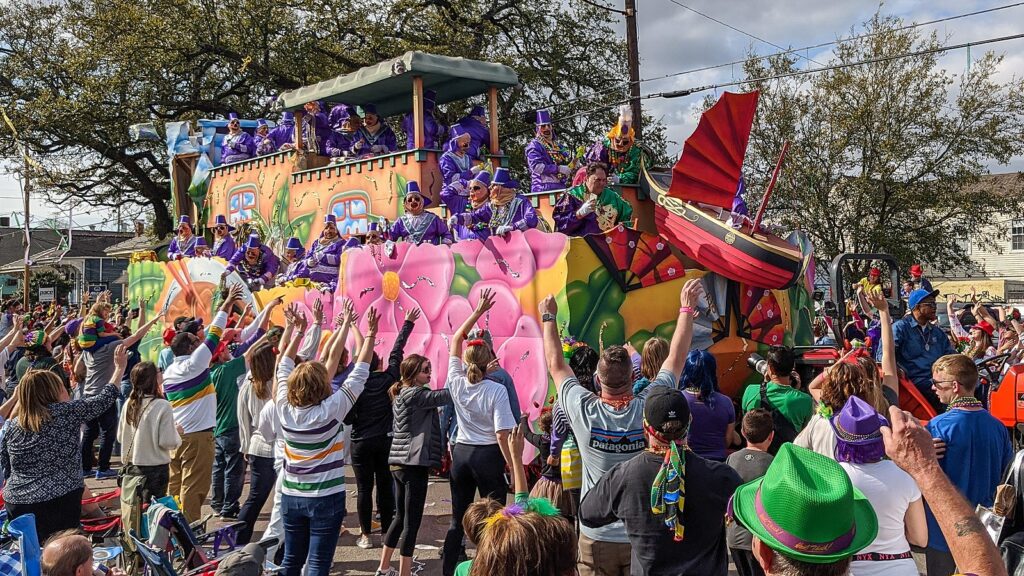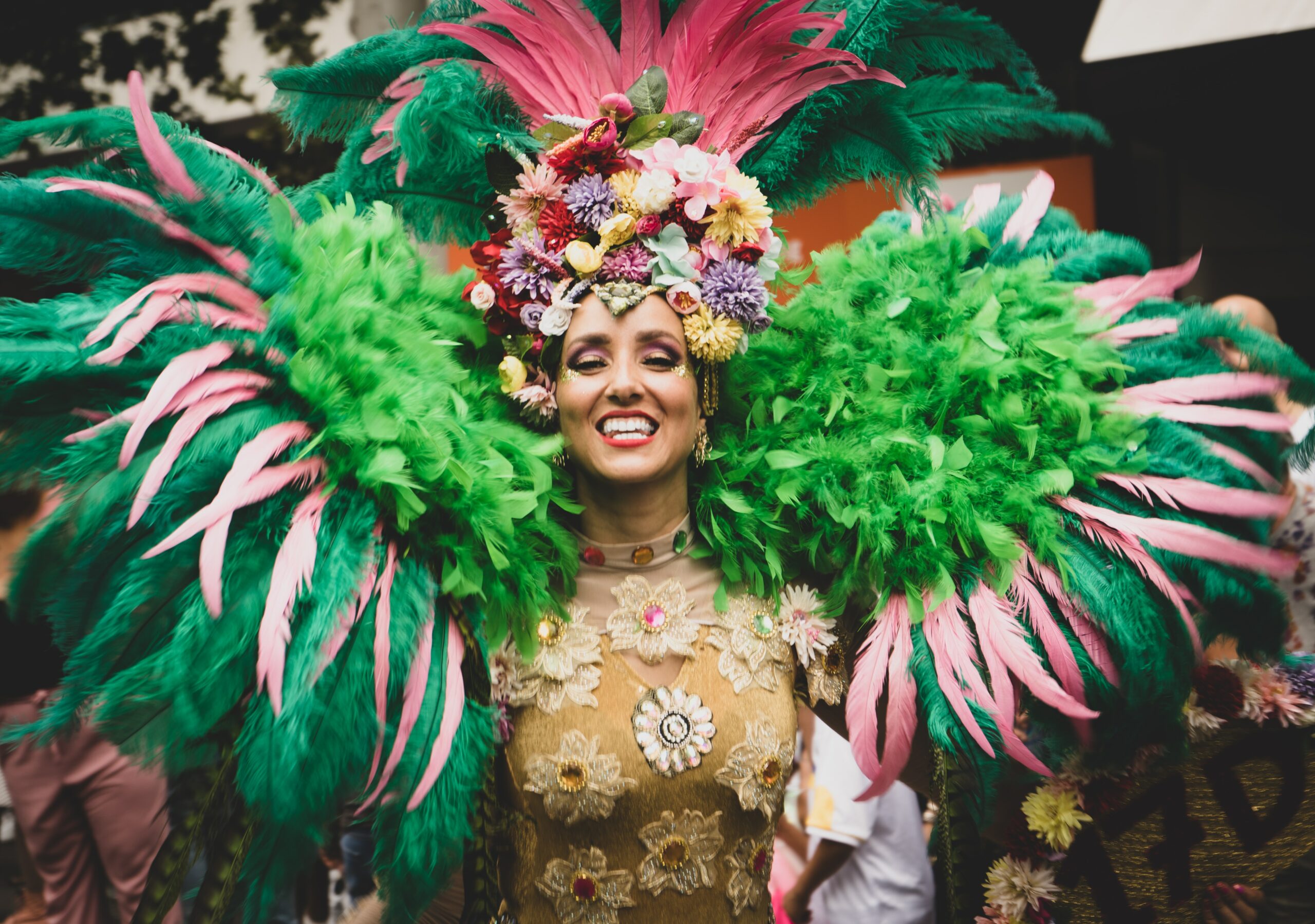
Becoming an Emotionally Intelligent Leader in Hospitality
Growing Your Emotional Intelligence as a Leader Means Enhancing Mental Health for You and Your Team Running a business isn’t only about operations—it’s about managing
The Hospitality of Louisiana runs through my DNA. I grew up in a small town south of New Orleans (yes, there really are places south of New Orleans). Before moving to Dallas full-time, I spent time living in Baton Rouge and lived between New Orleans and Dallas while I attended Tulane for my MBA. Mardi Gras and Halloween remain two of my favorite times to visit the Big Easy!

Mardi Gras, Fat Tuesday, Carnival, whatever you call it in whatever accent you have, is upon us! Technically, it’s this coming Tuesday (Feb 13th, 2024), nestled between Super Bowl Sunday and Valentine’s Day. Mardi Gras “season” officially starts the 12th night after Christmas, with parties and parades building up to Mardi Gras day.
Culture is the personality of a business based on the sum total of the values, management style, traditions, stories, and beliefs that are shared across the organization. A big part of an organization’s culture is the language it uses to get work done. Just as the restaurant industry has its own terminology, so does Mardi Gras:
Twelfth Night is the official beginning of the Mardi Gras Carnival season. Also known as the “Epiphany” (the day the wise men visited the baby Jesus). It is called the twelfth night because it is always celebrated twelve days after Christmas.
Tableau (ta-blow) or Ball is a masked ball in which scenes representing a specific theme are acted out for the entertainment of club members and their guests, Krewe royalty is traditionally presented during the bal.
Lundi Gras (Lun-dee graw) is the Monday before Fat Tuesday/Mardi Gras.
Go Cup is a New Orleans staple. Plastic cups that go anywhere for drinking in the streets (no glass allowed!).
Krewe (crew) are private clubs that organize the Mardi Gras parades. Fun fact: there was lots of debate at Raising Cane’s Chicken Fingers about calling the employees Crew Members or Krewe Members. They call them Crew Members today.

Neutral Ground is the strip of ground between two streets that you probably call a median. This is an important way to find points during parades — similar to: are you on the driver’s side or passenger side of the float?
Throws are beads, toys, stuffed animals, plastic cups, and other trinkets tossed at a parade.
Signature Throws are the most prized throws from each krewe. Zulu has its famous coconuts, and many other krewes offer hand-decorated items, including Muses shoes, Nyx purses, Alla genie lamps, Carrollton shrimp boots, and so on. Most krewes have medallion beads that feature that year’s theme. Check out the Muses shoe gallery.
Doubloons (duh-bloon) are aluminum coins minted with the names of krewes.
Flambeaux (flam-bow) are people who carry gas torches to light nighttime parades (this is a dangerous job, and they accept tips!).
Marching Bands are featured in almost every parade, setting the vibe for different sections of the parade. Marching bands from Louisiana State University, Southern University, Saint Augustine High School, Alcee Fortier, Warren Easton, McDonogh 35, Sarah T. Reed, and Jesuit High Schools are some of the most well-known. Check them out here.
Mardi Gras Indians are African American revelers who spend a year beading and feathering elaborate suits.
Ash Wednesday is the day after Fat Tuesday/Mardi Gras when lent begins. It begins promptly at midnight when street sweepers start clearing the French Quarter.

Every culture has its own traditions… especially when it comes to food in Louisiana. Louisiana’s cuisine is influenced by a myriad of cultures including French, Spanish, African, and more. Growing up, we almost always had chicken from Popeye’s (before they needed to add “Louisiana Kitchen” to the name!). I later had to change my allegiance to chicken tender tailgates from Raising Cane’s. Here are a few items I think are most common in Louisiana and especially during Mardi Gras:
King Cake: Come Mardi Gras, king cake reigns above all else. We start looking for them in stores pretty much as soon as Christmas passes.
Jambalaya: Rice, vegetables, and meat (often andouille sausage and chicken) combine in this one-pot dish, which resembles paella. Super easy to make and very hardy for long days or nights standing on the parade route yelling “throw me somethin’.”
Muffuletta Sandwich: Italian immigrants to New Orleans created the muffuletta, stuffing salami, ham, cheese, and marinated olive salad between dense slices of Sicilian sesame bread. The best are from Central Grocery but the folks at Jason’s Deli do a nice job as well.
Creole Gumbo: With its roux, stock, meat or seafood, and a blend of celery, bell peppers, and onions, Gumbo is a warm go-to, especially on cold days. More like a stew than a soup, we consider gumbo a “whole meal” served with maybe a side salad and some french bread.
As the echoes of revelry fade away and the last beads are collected, the hospitality of Louisiana remains etched in the memories of all who experienced the magic of Mardi Gras. It’s not just a celebration; it’s a journey into the heart and soul of a state that knows how to throw a party like no other. Laissez les bon temps rouler – let the good times roll! If you ever visit New Orleans and need recommendations, don’t hesitate to contact me.

Growing Your Emotional Intelligence as a Leader Means Enhancing Mental Health for You and Your Team Running a business isn’t only about operations—it’s about managing

3 Steps to Recognizing and Repairing Poor Management Hospitality isn’t just about serving food, making drinks, or booking rooms—it’s about people. And when management fails

Taking on a role as a new manager is an exciting step. It brings new challenges that allow you to stretch and grow. As a